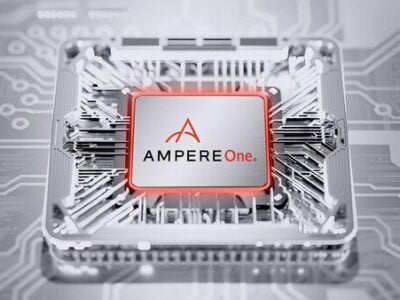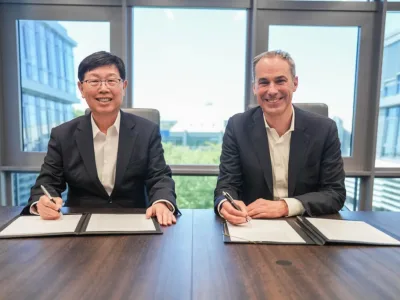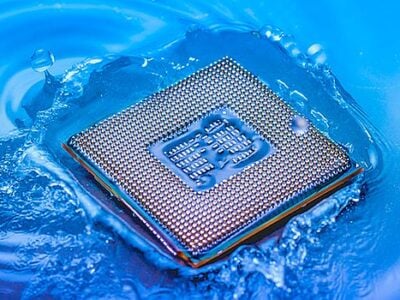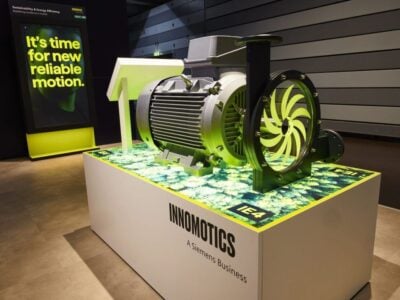
Jensen Huang’s defence of the Nvidia-ARM deal
The deal is set to produce a major force in fabless semiconductors targeting artificial intelligence but has been attacked by observers for threatening the independence of IP provider ARM and potentially impairing its business (see ARM sale to Nvidia agreed at $40 billion and Opinion: Nvidia’s bad deal is not yet done). By Nvidia’s own estimation the deal could take as much as 18 months to clear regulatory hurdles that could be thrown in its path.
The conference calls painted a picture of a combined Nvidia-ARM that would be a 30-year champion for the era of artificial intelligence. It also emphasized that ARM would continue to license technology out using an open business model. Indeed, Huang frequently said that one purpose of the deal was to give Nvidia’s GPU and AI technology access to customers via the IP licensing business model.
First line of defence
Most analysts bowled the fairly straight ball at Huang that if the deal went through, Nvidia would be competing with its customers; that this could be bad for Nvidia’s chip sales and for ARM’s IP licensing.
Huang’s first line of defence was that as it stands ARM and Nvidia barely compete with each other and so IP licensing would continue in an open and neutral manner. In 2019 Nvidia shipped 100 million chips mainly into the data center while ARM technology shipped in 22 billion chips across all embedded fields, he said. “We’re [Nvidia is] in very few mobile communications. We’re in very few embedded applications.” He added: “We love the business model. It will stay open and fair and we’ll offer even more IP,” said Huang.
So, Huang’s position appears to be that it is good to use different delivery mechanisms for different application sectors.
Next; Conflict of interest
But Nvidia’s adoption of the IP licensing model while also selling chips does not fundamentally address the objection of conflict of interest. It just adds Nvidia GPUs and AI cores to the conflict. One analyst picked up on that and used his question to probe further.
Huang’s second line of defence was to say that Nvidia welcomes competition throughout the data center platform from chip to software. He said Nvidia sells chips, boards and software in any combination. Some customers take the chips and make their own boards or write their own software. Others take the software and make their own chips. Some take the platform.
In effect, Huang said Nvidia already competes with its customers everywhere from chip to board to software. Adding ARM will merely add competition at the IP level and is nothing to be perturbed about. “We will stay neutral. We are committed to the open business model for boards, chips and throughout the software stack,” Huang said.
However, Huang did not say that ARM would be operated as wholly-owned subsidiary with its own board of directors, one thing that might have deflected some of the criticism over competing with customers. Instead he said ARM would operate as a business unit based in Cambridge. This might seem like a minor distinction but it indicates a direction of travel, towards merged engineering resources.
Three reasons
Huang said there are three reasons why Nvidia wants to buy ARM as soon as possible:
1) To license Nvidia’s IP through the ARM ecosystem
2) To create a first-class data center computing platform based on the ARM architecture
3) To invent the future of cloud-to-edge computing
Segars appeared keener on the second two of the three points. “I truly believe AI is the defining technology of the future. We are just at the starting point. [The deal will provide] so much more weight and resource. We will also have more to go and sell, which is nice.”
Segars also admitted he had spent some time speaking with customers about the deal but did not characterise their attitude as either opposition or acceptance. “Independence is part of our strength.” He said the combination with Nvidia will bring more investment but with the intent to maintain the independent business model.
Next: Promise or time-bound legal commitment
A journalist pointed out that UK government had extracted time-based legally-binding conditions on ARM’s current owner SoftBank Group Corp. when it acquired ARM for $31 billion back in 2016 and that these conditions, around employment and being based in the UK, are due to expire in 2021. Had Nvidia made similar undertakings or was it prepared to extend the current undertakings?
“We’re open-minded to talk to the UK government,” said Huang before adding that the UK government should be very keen on the deal because of all the things Nvidia is promising to do in Cambridge. These include expanding ARM R&D and building an AI research center to house an Nvidia-ARM based supercomputer there.
“How that’s documented, we’re more than delighted to have that discussion. We’ve just started the conversation with the UK government. We have plenty of time to do it,” said Huang.
It would appear Huang and Nvidia are not as keen on making legally-binding commitments as they are on making verbal promises, but that should not be a surprise. But at the same time Huang appears to be so keen on the deal that he would be prepared to sign some sort of agreement with the UK government.
Getting down to the nitty gritty an analyst asked: “Would a combined Nvidia-ARM continue to develop ARM’s Mali graphics processor architecture and continue to use the RISC-V processor architecture?” Huang was quick with his answer; “Yes and yes.”
He pointed out the Nvidia graphics and Mali graphics are aimed at different markets and they both serve them well. There was room for both to go on developing. On RISC-V he said: “We are enthusiastic users of both ARM and RISC-V. They are very different things.” He said the ARM architecture and cores have the advantage of a rich ecosystem helping get products to market, legacy software and lots of developers working on applications and software – but not all use cases need that. “We use RISC-V internally all over our large chips and we will continue to do that,” said Huang.
So it would seem that the RISC-V architecture is better than the ARM architecture, or at least more cost-effective; unless you need to run legacy software or need a rich ecosystem to help you get product out the door. Otherwise why wouldn’t Nvidia use small ARM cores all over its large chips instead of RISC-V? And that is according to the would-be owner of ARM.
Next: Regulatory concern
Several analysts and journalists alighted on the issue of regulatory approval.
Huang’s first point was that for the purposes of export controls the country of origin of the technology is the relevant factor, not the legal location of the owner. He said ARM’s intellectual property would continue to be mainly registered in the UK and so the transfer of ownership from a Japanese company to a US company would make no difference.
Callers pressed Huang as to what China’s regulatory response to the proposed take over is likely to be. “We’ve been through the regulatory process in China with Mellanox,” said Huang (see Nvidia to buy Mellanox for $6.9 billion). He added that the China regulator is pro-competition and pro-choice for the consumer. “They will love it,” he said.
This response does not explain why Chinese regulators failed to approve Qualcomm’s proposed acquisition of NXP Semiconductor in 2018, a move that may have had political overtones. And now the US government has spent more than a year making commercial life almost impossible for Huawei and HiSilicon. It is now threatening to extend that discomfort to Chinese foundry Semiconductor Manufacturing International Corp., so why wouldn’t China seek to extract revenge against Nvidia?
Huang has his own experience and an undeniable enthusiasm for the deal. If enthusiasm were enough, the deal would be done in a lot less than 18 months.
Related links and articles:
News articles:
ARM sale to Nvidia agreed at $40 billion
Opinion: Nvidia’s bad deal is not yet done
Samsung wants consortium, not Nvidia, as buyer
Nvidia to buy Mellanox for $6.9 billion
 If you enjoyed this article, you will like the following ones: don't miss them by subscribing to :
eeNews on Google News
If you enjoyed this article, you will like the following ones: don't miss them by subscribing to :
eeNews on Google News




